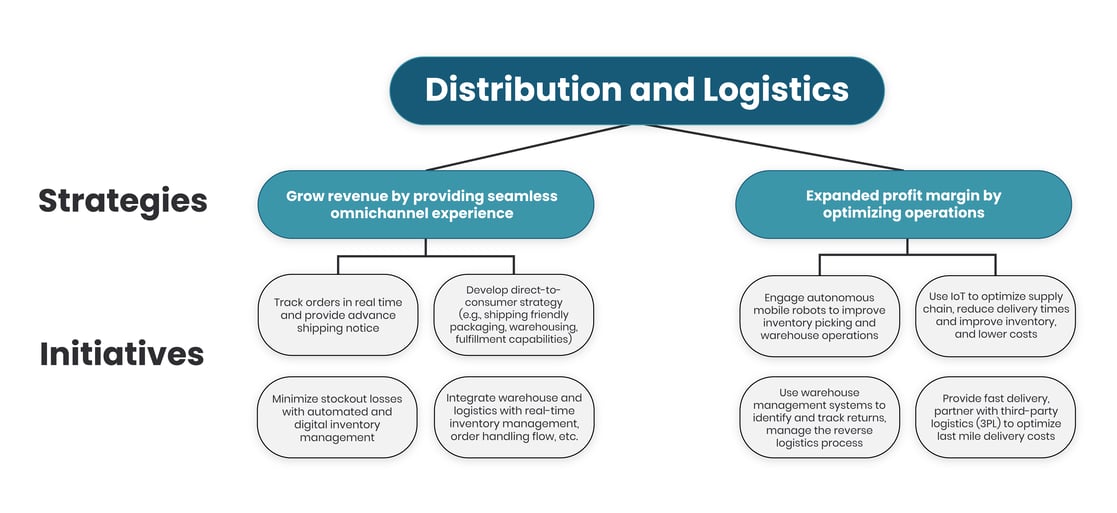A VALUE-BASED SALES STRATEGY FOR CALLING ON DISTRIBUTION & LOGISTICS EXECUTIVES
Distribution & Logistics (D&L) are critical elements in managing a company’s revenue and profits. Selling your solutions to D&L executives requires you to align your solutions with what is most important to them.
This article helps sales organizations better sell to D&L executives by providing examples of their strategies, initiatives, and operational KPIs that they are focused on to help manage revenue growth and profitability.
STRATEGIES AND INITIATIVES TO GROW REVENUE
Below see examples of key strategies D&L executives are focused on, and the initiatives you can speak to that help achieve those strategies.
(Click to view larger in a separate window)
OPERATIONAL KPIS USED TO MEASURE THE SUCCESS OF THESE INITIATIVES
Here are examples of the operational KPIs you should focus on when speaking to the initiatives that drive these core strategies for distribution and logistics executives:
- Revenue
- Orders delivered on time
- Order fill rate
- Stockouts
- Profits
- Transportation costs
- Warehousing costs
- Reverse logistics costs
10 QUESTIONS TO ASK
Here are questions you can ask to help start the conversation:
-
How are you improving efficiencies across all processes, operations, and plants to eliminate waste? Are your processes continually re-evaluated, tracked, and refined?
-
How are you investing in "direct to consumer" initiatives as both a means to generate revenue and to acquire consumer data and trial innovative ideas?
-
How are you planning to take advantage of IoT and the potential to capture information during each phase of a product's journey through the value chain? How do you anticipate this will affect agility, quality, and time-to-market?
-
How are you planning, monitoring, and optimizing your distribution network and transportation routes?
-
How do you optimize where, when and how much inventory to hold for each product?
-
How effectively are you participating in the shift to non-traditional business models, such as direct-to-consumer and online subscription-based, as well as the shift in focus from a mass market to a niche market?
-
How effectively does your technology infrastructure enable the whole supply chain to monitor and share details, in real-time, about raw materials, components, stock levels, product locations, and delivery dates?
-
How often are you experiencing supply chain disruptions? What effects do these have on your costs and sales?
-
What are your strategies and plans around an autonomous supply chain? How are you planning to use advanced technologies like voice-generated purchases, smart shelf inventory restocking, drone deliveries, driverless trucks, etc.?
-
How will you develop supply chain capabilities that align with your omnichannel strategy and fulfill consumer orders quickly and profitably?
CREATE YOUR OWN INDUSTRY BLUEPRINT IN 6 STEPS
Now that you've read through this example, use our 6-step Industry Blueprint Guide to create your own playbook. Happy selling!

